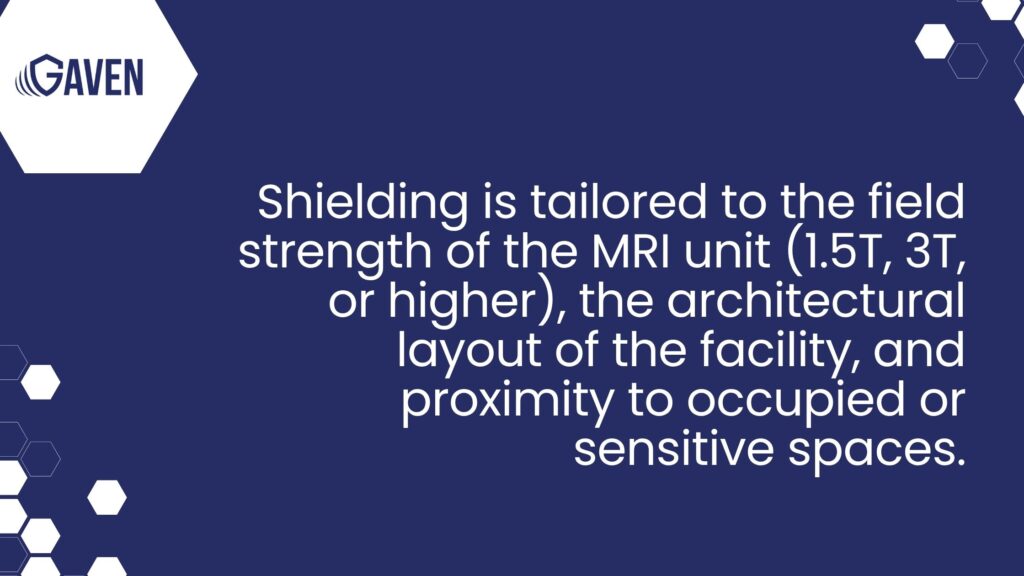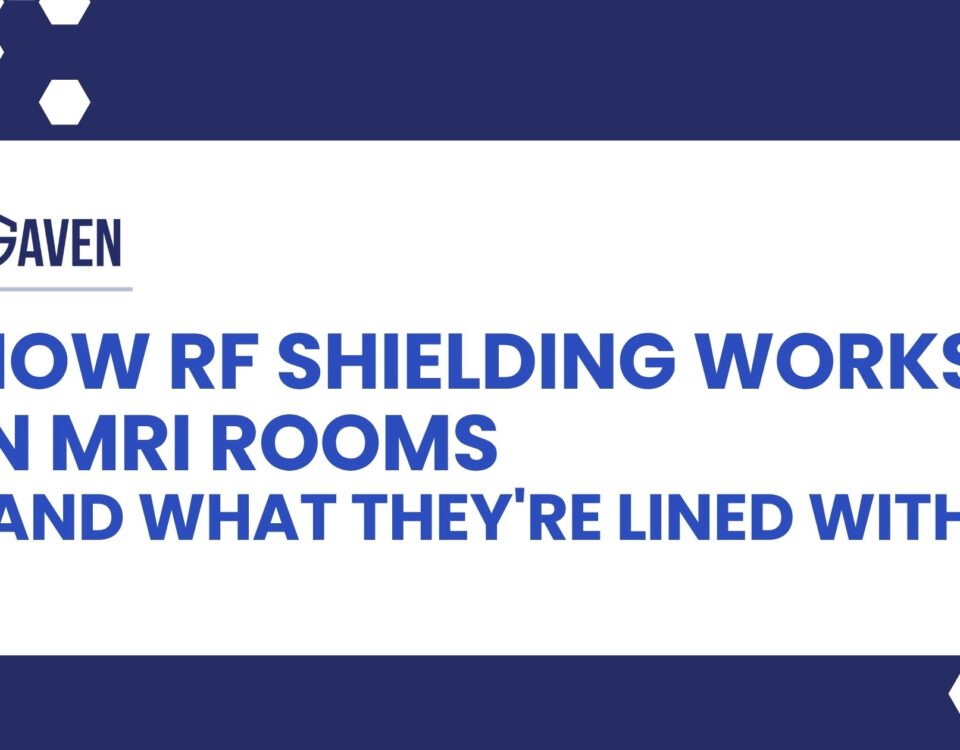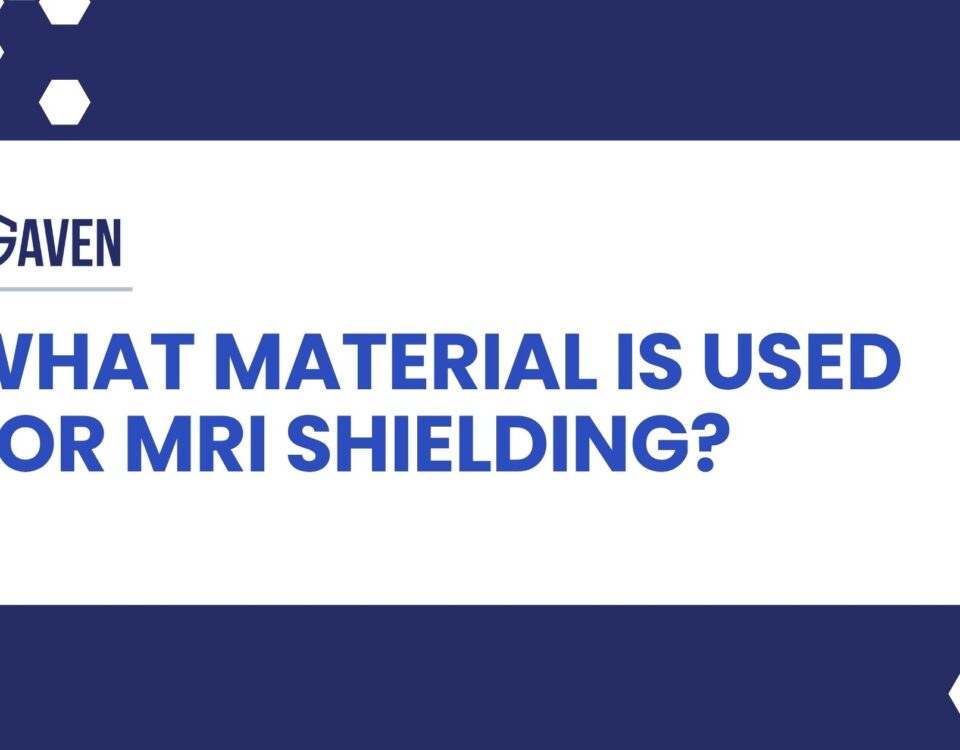


What is the Purpose of RF Shielding?
July 8, 2025


What Is Active Shielding in MRI?
July 8, 2025In MRI suite design, magnetic shielding plays a vital role in preserving safety, equipment reliability, and diagnostic accuracy. While RF shielding receives much of the attention, MRI Shielding strategies are incomplete without magnetic containment. Uncontrolled fringe fields from MRI magnets can extend beyond the scanner room, interfering with adjacent equipment, compromising safety, and violating regulatory standards. Magnetic shielding ensures these powerful fields are precisely controlled.
What is the magnetic shielding effect?
The magnetic shielding effect refers to the redirection or attenuation of magnetic fields using high-permeability materials. These materials, such as mu-metal and silicon steel, absorb and reroute magnetic flux lines, keeping them from penetrating sensitive areas.
Without this shielding effect, magnetic fringe fields—often defined by their Gauss levels—can create serious complications. For reference, a 5 Gauss field (about 1/10,000 of Earth’s magnetic field) is considered the maximum safe exposure level for the general public and for most standard electronic devices. But a 3T MRI scanner can emit fields well beyond this threshold without proper containment.
“The magnetic field doesn’t end at the magnet bore—it can extend well into adjacent areas. Shielding keeps those fields where they belong.” — John J. Gaviglia, Founder of Gaven Industries
Uses of magnetic shielding span beyond healthcare. From defense applications to semiconductor labs and particle physics environments, any setting that houses strong magnets or is sensitive to stray magnetic fields benefits from strategic shielding. In MRI facilities, where imaging precision and patient safety are non-negotiable, these effects are not just theoretical—they’re a daily operational concern.
What is magnetic shielding in MRI?
MRI magnetic shielding is the process of containing the scanner’s fringe magnetic fields within a specified boundary—typically defined by Gauss lines (e.g., 5G, 10G). This ensures that the powerful magnetic field generated by the MRI magnet does not interfere with nearby hospital departments, critical equipment, or public spaces.
Shielding is tailored to the field strength of the MRI unit (1.5T, 3T, or higher), the architectural layout of the facility, and proximity to occupied or sensitive spaces. Proper shielding is also a compliance matter: U.S. FDA guidance and IEC 60601-2-33 standards stipulate field containment limits that builders must adhere to.
Common MRI magnetic shielding materials include:
- Mu-metal: A high-nickel alloy with extremely high magnetic permeability, ideal for tight field redirection.
- Silicon steel: Used in larger surface-area applications like walls or floors, where cost and rigidity matter.
- Hybrid systems: Combining different layers and materials to achieve optimized attenuation and mechanical integration.
When designed correctly, magnetic shielding makes sure the room meets its Gauss containment requirements—often as low as 5G at the control room or public corridor boundary.

What are MRI rooms shielded by?
MRI rooms rely on a layered shielding approach that combines both RF and magnetic shielding. RF shielding prevents electromagnetic noise from entering the suite and disrupting image acquisition. Magnetic shielding ensures that the MRI’s own magnetic field is confined to its intended space.
MRI room shielding typically includes:
- RF shielding foil or panel systems bonded around the walls, ceiling, and floor
- Passive magnetic shielding built into walls, floors, or ceilings near sensitive areas
- Waveguide penetrations, shielded air ducts, and custom door systems that maintain enclosure integrity
Material selection depends on room geometry and EMI site conditions. For example, if an MRI is installed adjacent to a data center, magnetic shielding must be prioritized along that wall to protect server integrity. Likewise, if control rooms or nurse stations fall within proximity of the magnet fringe field, precise Gauss mapping and supplemental shielding must be implemented.
What are the two types of magnetic shielding?
MRI suites may use either or both of the following:
1. Passive Magnetic Shielding
This involves fixed barriers—constructed of high-permeability materials like mu-metal or steel—built into the room’s structure. Passive shielding is static, reliable, and doesn’t require power or electronics. It’s especially useful for controlling fringe fields in predictable spatial zones, such as control rooms, elevator shafts, or corridors.
Pros:
- No energy consumption
- Long lifespan
- Effective for defined zone protection
Cons:
- Space-consuming
- Limited adaptability once installed
2. Active Magnetic Shielding
Built directly into the MRI system, active shielding uses superconducting coils to oppose and cancel out the magnet’s fringe field. This is integrated at the machine level, and while it helps reduce the extent of fringe field propagation, it typically does not replace the need for passive shielding.
Pros:
- Embedded in scanner
- Efficient for reducing long-range fringe field
Cons:
- Doesn’t fully eliminate magnetic spill
- Cannot address facility-wide safety and code compliance alone
“A well-designed magnetic shielding plan considers both active and passive strategies, with the goal of protecting people, equipment, and diagnostics.” — John J. Gaviglia, Founder of Gaven Industries
Why does this matter?
Consider this: a 3T MRI system without proper shielding can produce a 5 Gauss line that extends 13–15 feet in every direction. That’s enough to encroach into hallways, electrical closets, or adjacent rooms—potentially interfering with pacemakers, disrupting other imaging equipment, or violating safety zoning.
A case study published by the AAPM (American Association of Physicists in Medicine) found that improper magnetic shielding in an urban installation resulted in fringe fields extending into adjacent tenant spaces, triggering building code violations and forcing costly retrofits.
Designing for containment and performance
Designing an MRI room involves more than just equipment specs—it requires deep attention to magnetic safety. From the outset, Gaven Industries collaborates with architects, engineers, and healthcare stakeholders to map fringe field risks, design custom shielding assemblies, and test each room for compliance before patient use.
Whether retrofitting an older suite or planning a state-of-the-art imaging facility, shielding design impacts both safety and operational performance. If magnetic shielding is treated as an afterthought, the cost of remediation can be substantial—impacting schedules, budgets, and reputations.
Call to Action
Need reliable magnetic shielding for your MRI suite? Gaven Industries designs and installs custom MRI Shielding solutions that ensure safety, compliance, and performance.




